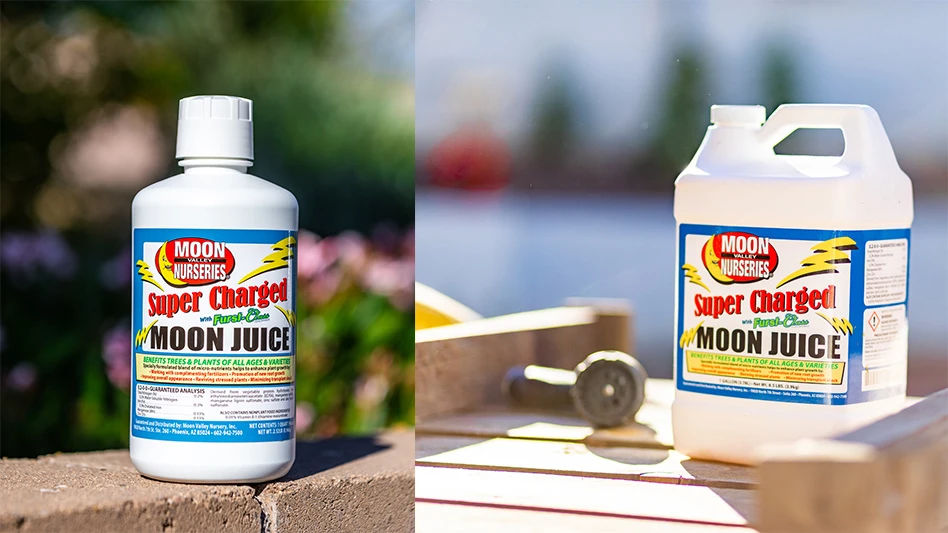Eastern sugar maple, Acer Saccharum, is native in Eastern Oklahoma but is rarely grown in central and western parts of the state because they do poorly. Heat, drought, drying winds and alkaline soils are listed as culprits. Caddo sugar maples, Acer Saccharum ‘Caddo,’ however, are better equipped to tolerate heat and drought conditions.
The potential to improve on this landscape tree in a breeding program has been hindered by poor germination of seeds and weak seedlings.
Testing the waters
In 1974, I obtained more than 200 bare root seedlings 3-4 feet tall from Ozark Nursery. The seedlings were planted in an experiment, watered in several times by hand, and all received a moderate rate of fertilizer. With 25 trees in each of three replications, drip irrigation was provided for 1/3 of each row. Drip irrigation plus mulch was provided for 1/3 of each row, while the remaining 1/3 of each row was neither irrigated nor mulched.
All of the seedlings survived and looked good during April and May. With the arrival of the heat and desiccating winds of summer, the seedlings began to yellow, blacken along the margins, and develop leaf tatter. Within three to four weeks, trees turned from attractive to just plain ugly. Trees with drip irrigation or drip plus mulch were just as unsightly as those with no irrigation or mulch. All seedlings survived but I noted then, “These trees have a lousy top but a very good root system.”
In 1986 there was an exceptional seed population. Seed was collected from 14 trees. One tree in Stillwater, Okla., proved to be a superior parent. Seeds germinated better and produced a higher number of strong seedlings than all other trees. It served as my primary seed source until that tree was destroyed in a storm in 1996.
Seeds collected from this tree in 1994 were especially good, resulting in 28 exceptional seedlings. These were grown first in containers, then in the field for a number of years. With each year’s evaluation, seedlings were culled and discarded until only five remained.
A true stand-out
One tree consistently stood out during continual evaluation of tree form, dark green foliage color, fall color, and resistance of leaves to heat, wind and drought. This tree would remain dark green all summer and into very late fall, then after nearly all other trees around had lost their leaves, it would explode in color. Beginning at the top and progressing slowly downward, shades of yellow and light orange progressed to dark oranges and reds. Depending on the season, the show might continue for three weeks or longer. Thus the registered trademark name Powder Keg.
 However, sugar maples are notorious for being difficult to propagate, especially from cuttings, and Powder Keg was true to form. After a number of years of taking cuttings and using every trick in the book, the cuttings would root reasonably well, but not survive the first winter. Therefore, the idea of budding or grafting was explored.
However, sugar maples are notorious for being difficult to propagate, especially from cuttings, and Powder Keg was true to form. After a number of years of taking cuttings and using every trick in the book, the cuttings would root reasonably well, but not survive the first winter. Therefore, the idea of budding or grafting was explored.
The Oregon climate is ideal for growing an array of trees and other nursery stock, and many trees are propagated by transferring a bud from a select parent tree onto selected seedlings. I contacted Keith Warren with J. Frank Schmidt & Son in Boring, Ore. He had tried budding a selection of Caddo onto Caddo seedlings, but growth was poor. From the results of the “good root systems” in the 1974 study, I suggested budding a Caddo selection onto eastern sugar maple seedlings.
Budwood from Powder Keg in Oklahoma was shipped to Oregon in late July 2011. An email in September related that the buds were doing well. In October, another email also had photos of the budded trees with excellent growth, stem taper and branching. In one growing season, the buds grew six feet or more. These trees were well branched, ready to be harvested bareroot and shipped.
The combination of a very heat and drought tolerant top that consistently yields spectacular fall color on a tough eastern sugar maple root system is adaptable to a wide geographic range. Hardiness is from Zone 5-9.
It takes time to build up sufficient population of parent trees of a selection in order to bud enough seedlings to meet demand. It will be a few years before significant numbers of Powder Keg Caddo sugar maple trees are available, but it will be worth the wait.
Dr. Carl Whitcomb is founder of Lacebark Inc. in Stillwater, Okla., carl@lacebarkinc.com.

Explore the March 2013 Issue
Check out more from this issue and find your next story to read.
Latest from Nursery Management
- Plant breeding as an art
- Society of American Florists accepting entries for 2025 Marketer of the Year Contest
- Sustainabloom launches Wholesale Nickel Program to support floriculture sustainability
- American Horticultural Society welcomes five new board members
- Get to know Christopher Brown Jr. of Lancaster Farms
- American Floral Endowment establishes Demaree Family Floriculture Advancement Fund
- The Growth Industry Episode 3: Across the Pond with Neville Stein
- The Growth Industry Episode 2: Emily Showalter on how Willoway Nurseries transformed its business







